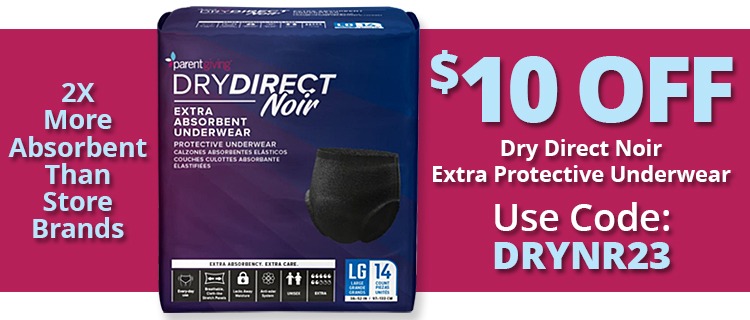There are numerous ways that UV exposure can negatively affect our eyes and subsequently our vision. In some cases, this exposure many even lead to more serious conditions such as Photokeratitis, Pinguecula, Pterygium, Cataracts, and Macular Degeneration.
UV Light and Wavelengths
Before jumping into the conditions associated with UV light exposure, I thought I'd provide a quick refresher course on the types of UV light. Within the invisible light spectrum we have UVA, UVB, and UVC. Here’s the breakdown:
UVC is the most damaging to the skin. Thankfully, however, the majority of UVC is absorbed by the ozone layer and doesn’t reach us.
UVB affects the epidermis, or outer layer, of the skin. This results in sunburn, blistering, or possibly skin cancer. In relation to the eyes, it affects the corneas, or the clear front part of the eyeballs. This can cause severe irritation, light sensitivity, and lots of tearing. More on that later!
UVA is the one that penetrates the skin the most. This is because even though it isn’t as strong as UVB rays, it is more prevalent. UVA light makes up 95% of the UV radiation that reaches the earth and is the one that causes tanning and aging of the skin. But because it penetrates more deeply, it affects the inner layers of the skin and eyes.
Eye Conditions Associated with UV Light Exposure
Now that we’re up to speed, let’s talk about the specific effects these rays have on eyes. I will discuss them in order from short term exposure to long term exposure to the sun.
Photokeratitis
The first eye condition that can present from ultraviolet exposure is photokeratitis or ultraviolet keratopathy. Photokeratitis is a swelling or inflammation of the cornea, which is the clear front covering of the eye. One can experience many symptoms such as, redness, blurred vision, tearing, light sensitivity, or general pain of the eyes. This can result from a day at the beach or on the slopes and is usually a consequence of not wearing proper protection from the sun (i.e., sunglasses or a hat). It is also commonly referred to as snow blindness. Photokeratitis can also be seen in welders.
This is usually a temporary condition but does require treatment with antibiotics and artificial tear eye drops to help it along. Cold compresses can also be used to help with the discomfort.
Pinguecula
The second eye condition that can result from sun exposure is called a pinguecula. This presents as a white or yellow raised area or bump within the conjunctiva, which is the gelatinous layer that covers the white of the eye just outside of the colored part. This is particularly common in those who live in very sunny areas or even very dry, sandy, or dusty environments. This is not something that goes away once it presents itself, but can be treated if it becomes red or swollen with various eye drops. People with this condition should focus on using sunglasses or goggles for protection from the sun, wind, sand, or dust to prevent it from worsening.
Pterygium
The third eye condition is called a pterygium. With continued sun exposure, a pinguecula can grow from the white part of the eye onto the cornea, which is the clear front part of the eye. A pterygium is more obvious because it is a white, wedge or wing-shaped growth over clear tissue. If this continues to grow, then it may lead to scarring of the cornea, which could lead to permanent vision loss or distortion. If the pterygium is progressing, then surgery is required to remove it to save vision. This is a somewhat controversial procedure, in that pterygia have a high recurrence rate after removal. However, there have been some advances recently to help reduce recurrence by using other tissues of the eye or various compounds/agents during the removal procedure. This is a very common condition in those who live near the equator.
It is worth mentioning that although Pingueculas and Pteryhiums are related, they can present separately. Sun protection is once again the best prevention.
Cataract
The fourth eye condition from long-term exposure of the sun (we are talking years of sun exposure), is a cataract. Though it is thought that we will all develop cataracts over time if we live long enough, there is evidence that those who have constant exposure to the sun, such as those close to the equator, will develop them more rapidly. Research is also showing that those who eat healthy diets in the form of green leafy vegetables, fruits, and antioxidants, and non-smokers are reducing the onset of cataracts. UV400 sunglasses are recommended for the best sun protection.
Macular Degeneration
The fifth eye condition that can result from long-term sun exposure is damage to the retinal tissue or macular degeneration. The retina is the multiple-layered lining of the inside of the eye. An area near the center of the retina is called the macula. The macula is where we get our central vision from and the area that provides the clearest vision. In macular degeneration, the tissue composition within the macula begins to change. This causes loss of central vision resulting in blurred vision and eventually blank spaces in vision. This condition usually progresses slowly, but it can progress more quickly in some cases. This is most common in those 50 years of age or older, and there is evidence that those with macular degeneration have had more sun exposure throughout their life. There are various treatments for macular degeneration depending on the severity of the case, however, there is currently no cure. Treatment is used only to slow the progression, but cannot fix what has already been compromised.
These are just a few reasons to minimize sun exposure. There are other conditions from ultraviolet light that can affect the skin surrounding the eyes. In the meantime take these tips into consideration.
- Always wear sunglasses to protect your eyes when outside year-round, i.e. UV400 sunglasses
- Wear wide-brimmed hats
- Avoid the sun during the hours between 10 am-4 pm
Choosing Prescription Sunglasses
You can customize prescription sunglasses to your exact needs. They can be made with almost any type of lenses (single vision, bifocal, or progressive) and in various lens materials and colors. Most prescription sunglasses use the high index polycarbonate lens material with high-performance prescription sunglass lenses usually made using Trivex.
Trivex Sun Lenses
Trivex is a wonderful substitute for polycarbonate lenses in prescription sunglasses because, unlike polycarbonate, Trivex can be easily tinted. Trivex is much better suited for tinting and is an excellent choice for rimless drill-mounted frames. While Trivex has a slightly lower refractive index than polycarbonate lenses, it is the lightest of any lens material available today. This means that although the lens may be a little thicker than polycarbonate lenses, they are similar in weight. Like polycarbonate lenses, Trivex also has inherent 100% UV protection. However, it is optically superior to polycarbonate lenses, meaning it is much less distortive.
Custom Lens Colors and Tinting
Custom lens color is created by dipping the lenses into a "tint tank," where the tint is infused into the lenses.
Brown and gray are the most popular colors for sunglass lenses. Brown is the best color overall because it offers the best contrast and the best depth perception. Brown lenses provide the wearer the broadest light spectrum through to the eye while blocking blue light and offering optimum contrast. Brown is excellent for applications where distances need to be constantly judged, like driving or participating in sporting activities. Brown is also best for lower light situations, like fishing in the late afternoon or early morning. Grey tint is best for bright light situations like water sports because it blocks out the sun's brightest rays.
Tint density is defined as a percentage, where 0% is completely clear, and 100% permits zero light to pass through. A 10% to 20% tint is typically used for a fashion tint, and a 50% to 80% tint is used for outdoor protection from the sun.
Sun-Sensitive Transitions Lenses
Sun-sensitive lenses are also known by the brand name Transitions, and the technical name "photochromic". Sun-sensitive lenses automatically darken to a moderate shade when they are exposed to the ultra-violet rays of direct sunlight. When the direct sunlight is removed, the lenses lighten again. Sun-sensitive lenses are typically only available in brown and grey. Sun-sensitive lenses are available in the normal range of vision correction for prescription sunglasses.
Polarized Lenses
Polarized sunglasses are essential if you will be on or near the water. These lenses are tinted in a unique way block vertical light from hitting your eye and causing eye strain. Hunters, boaters and fishermen, golfers, and drivers are the most common users of polarized lenses. Any surface can create glare in sunlight, including water, sand, snow, windows, vehicles, and buildings. Polarized lenses ease eye stress and fatigue in the sun, and lenses are available in several color and density options.
Lens Coatings
The most important coating for sunglasses is Anti-Reflective. Anti-Reflective coating goes on the inside (side closest to your face) of prescription sunglasses and non-prescription sunglasses. It prevents light and glare from coming into either side and from behind and bouncing off the inside of the lens and into your eye. This kind of glare is very common in sunny situations and is highly disruptive. Without AR coating on your sunglasses, your eyes are subject to much more strain, and your vision is appreciably impaired.
Clip-on Sunglasses
Clip-on sunglasses lenses are tinted lenses that clip on to regular prescription glasses, in essence turning them into prescription sunglasses. Usually, the clip-ons size and shape match the traditional eyeglasses frame in shape and attach via clips or with magnets. Keep in mind that regular clip-ons require two hands to add and remove the clips, while magnetic clip-ons can be added or removed with just one hand because they hold onto the frame with magnets instead of clips.
Clip-ons have advantages and disadvantages. It is convenient to be able to convert your eyeglasses into sunglasses and back again. However, wearing a clip-on means adding a significant amount of reflected glare. Light passes through the clip, reflects off the front of the frame, reflects off the back of the clip, and bounces around in there, causing significant additional glare and eyestrain that does not occur with prescription sunglasses.
Fitover Sunglasses
Fitover sunglasses are designed to fit over your eyeglasses, covering them completely. They also serve to block out light from entering around the sides of your glasses. Side-glare is extremely annoying, especially on the water, so fit-overs may be a better solution than sunglass clip-ons.
Eyeglasses.com - 25% off "In Stock" Sale.
Use promo code: EYESALE25
Sources
- Karpecki, Paul, OD. “The Role of UV Damage in Ocular Disease” Review of Optometry, Continuing Education. October 2012. University of Alabama School of Optometry and Essilor. 15 July 2015 https://www.reviewofoptometry.com/continuing_education/tabviewtest/lessonid/108520
- “Ultraviolet and Blue Light Aggravation Macular Degeneration” American Macular Degeneration Foundation. 15 July 2015 https://www.macular.org/ultra-violet-and-blue-light
- “Understanding UVA and UVB” Skin Cancer Foundation. 15 July 2015 https://www.skincancer.org/prevention/uva-and-uvb/understanding-uva-and-uvb
- “Facts about Age-Related Macular Degeneration” National Eye Institute. June 2015. National Institute of Health. 15 July 2015 https://nei.nih.gov/health/maculardegen/armd_facts
- Lippincott, Williams, & Wilkins. The Wills Eye Manual. Baltimore: Wolters Kluwer, 2008.



